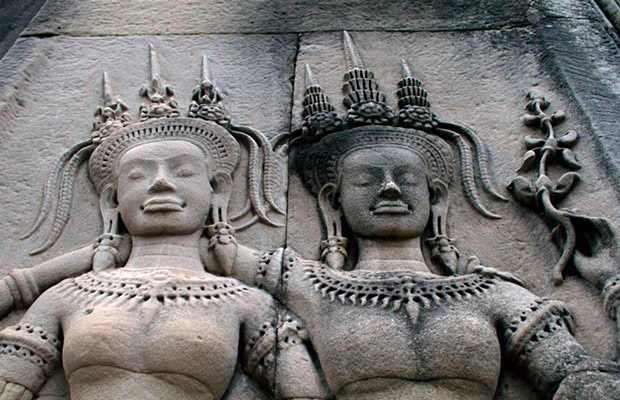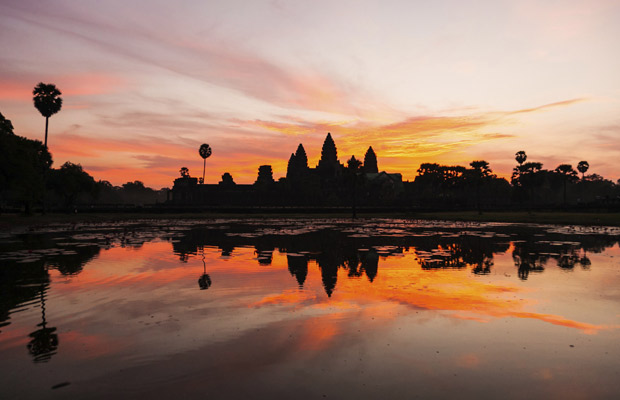Angkor Wat Temple
Since the "discovery" of the temple of Angkor Wat, released in the mid-19th century, it was described as the largest religious building in the world and is rightly spoken as one of the wonders of the ancient world along with sites such as Macchu Picchu and the Taj Mahal. The temple is located just over 6 km from Siem Reap, it is the centerpiece of the Angkor Archaeological Park and has been listed as a UNESCO World Heritage Site since 1992.
Angkor Wat Temple Tours Summary
Since the "discovery" of the temple of Angkor Wat, released in the mid-19th century, it was described as the largest religious building in the world and is rightly spoken as one of the wonders of the ancient world along with sites such as Macchu Picchu and the Taj Mahal. The temple is located just over 6 km from Siem Reap, it is the centerpiece of the Angkor Archaeological Park and has been listed as a UNESCO World Heritage Site since 1992.
One of the largest temples of Angkor, Angkor Wat was built under King Suryavarman II in the early 12th century. Originally built as a temple for Vishnu, it has been in continuous use as a Buddhist shrine since the adoption of Theravada Buddhism by the Khmer people. which means it has remained in excellent condition throughout the centuries. Because of its symbolic representation of the ancient Khmer nation, the temple survived the Khmer Rouge years relatively intact and the number of tourists has steadily increased since the political situation stabilized.
Angkor Wat Temple Tours Overview
Angkor Wat is the largest Hindu temple complex in the world, situated in Angkor, Cambodia, built by King Suryavarman II in the early 12th century as its temple and state capital. As the best preserved temple on the site, it is the only one to have remained an important religious center since its foundation - the first Hindu, dedicated to the then Buddhist god Vishnu. The temple is at the top of the high classical style of Khmer architecture. It has become a symbol of Cambodia, appearing on its national flag, and is the main attraction of the country by visitors.
Angkor Wat combines two basic architectural plans of the Khmer temple: the temple mountain and the later galleried temple, based on the Hindu architecture of southern South India, with key features like the Jagati. It is designed to represent Mount Meru, home of the devas in Hindu mythology: within a moat and an outer wall, 3.6 kilometers (2.2 mi) in length are three rectangular galleries, each raised above the next. In the center of the temple is a quincunx of towers. Unlike most Angkoran temples, Angkor Wat is oriented to the west; Scholars are divided as to the meaning of this. The temple is admired for the grandeur and harmony of the architecture, its extensive bas-reliefs and the numerous devatas that adorn its walls.
The modern name, Angkor Wat, means "Temple of the City"; Angkor is a vernacular form of the word nokor, which comes from the Sanskrit word nagar. Wat is the Khmer form of Pali word "vatthu" which means "temple grounds". Before this time, the temple was known as Preah Pisnulok (Vara Vishnuloka in Sanskrit), after the posthumous title of its founder.
History of Angkor Wat Temple
Angkor Wat is located 5.5 km north of the modern city of Siem Reap and a short distance south and a little east of the former capital, centered on Baphuon. It is in an area of Cambodia, where there is an important group of ancient structures. It is the southern end of the main sites of Angkor.
The initial design and construction of the temple took place in the first half of the 12th century, under the reign of Suryavarman II (ruled by 1113 - 1150). Dedicated to Vishnu, it was built as the temple of the king's state and the capital. As neither the base stela nor the contemporary temple inscriptions were found, their original name is unknown, but may have been known as Vrah Vishnu-lok (literally "Holy Vishnu-Location", Old Khmer 'Sanskrit). after the divinity he presides over. The work seems to have ended shortly after the king's death, leaving the bas-relief decoration unfinished. In 1177, about 27 years after the death of Suryavarman II, Angkor was dismissed by the Khams, the traditional enemies of the Khmer. Subsequently, the empire was restored by a new king, Jayavarman VII, who established a new temple of capital and state (Angkor Thom and Bayon, respectively) a few miles north.
In the late 13th century, Angkor Wat gradually shifted from the use of the Hindu Buddhist to the Theravada, which continues to the present. Angkor Wat is unusual among the temples of Angkor in that although it was somewhat neglected after the 16th century was never completely abandoned, its preservation was due in part to the fact that its moat also provided some protection against invasion by the jungle.
Angkor Wat temple today
The Archaeological Survey of India conducted temple restoration work between 1986 and 1992. Since the 1990s, Angkor Wat has seen ongoing conservation efforts and a massive increase in tourism. The temple is part of the World Heritage Site of Angkor, established in 1992, which provided some funding and encouraged the Cambodian government to protect the site. The German Apsara Conservation Project (GACP) is working to protect the devatas and other bas-reliefs that decorate the temple of damage. The organization's research found that about 20% of devatas were in very poor condition, mainly due to natural erosion and stone deterioration, but also due to previous restoration efforts. Another work involves repairing collapsed sections of the structure and preventing an additional collapse: the west façade of the upper level for example was supported by scaffolding since 2002, while a Japanese team completed the restoration of the northern library's overseas closure in 2005 The World Monuments Fund began work at the Churning of Sea of Milk Gallery in 2008.
Angkor Wat has become a major tourist destination. In 2004 and 2005, government figures suggest that 561,000 and 677,000 foreign visitors respectively arrived in Siem Reap province, approximately 50% of all foreign tourists in Cambodia for both years. The site has been managed by the private group SOKIMEX since 1990, which leased it from the Cambodian government. The influx of tourists so far has caused relatively small damage, in addition to some graffiti; Rope and wooden steps were introduced to protect bas-reliefs and floors, respectively. Tourism has also provided some additional funds for maintenance - as of 2000, about 28 percent of all Angkor site revenue has been spent in temples - although most work is done by teams sponsored by the foreign government rather than by the authorities of Cambodia.
At the ASEAN Tourism Forum 2012, both parties agreed that Borobudur and Angkor Wat would become sister sites and the provinces will become sister provinces. Two Indonesian airlines are considering the opportunity to open a direct flight from Yogyakarta, Central Java Province, Indonesia to Siem Reap
View Mores Temple Guide

Khmer Classical Dancing
The Grande Hotel in Angkor has a restaurant and stage by the river that features nightly performances of apsara style dancers. The show and dinner buffet is $ ...

Roluos Temple
Roluos (Khmer: រលួស) is a small modern Cambodian town and an archaeological site about 13 km east of Siem Reap along the NH6. Since it was the seat of Hariharalaya, [1]: 98 the first capital ...

Phnom Krom
Phnom Krom (Khmer: ភ្នំ ក្រោម) is a 140 m high hill near the town of Siem Reap in Cambodia and there is a temple located at the top that derived its name from the hill, "Prasat ...
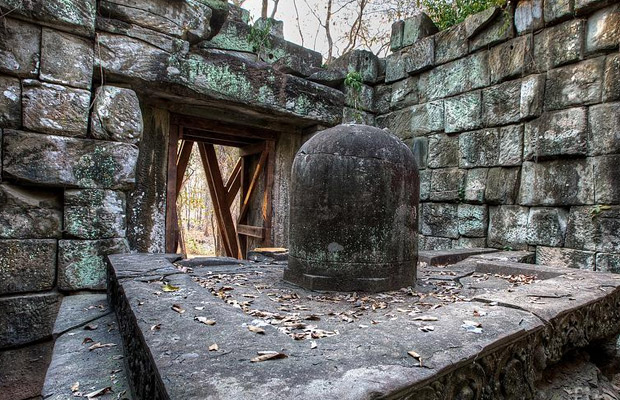
Prasat linga
The nearest monuments to the main temple complex of Koh Ker of Prasat Thom are five isolated temples belonging to the Northeast group. Each of them housed a monolithic decorated Lingam of enormous ...

West Baray
The West Baray (Khmer: បារាយណ៍ទឹកថ្លា, Baray Teuk Thla) is a baron or reservoir, in Angkor, Cambodia, oriented to the east and west, located west of the walled city, ...
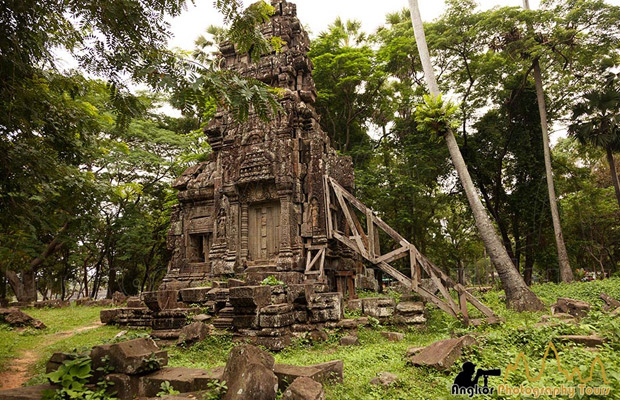
Ta Prohm Kel
Ta Prohm Kel (Khmer: Prasat Prasat or Prasat Prasat) is a small ruined sandstone monument in the archaeological park of Angkor, Siem Reap province, Cambodia. Ta Prohm Kel was one of the 102 hospital ...

Banteay Kdei Temple
Extensive monastic complex, largely unrefurbished, in the same style as Ta Prohm. It was originally built on the site of an earlier temple, and functioned as a Buddhist monastery under Jayavarman ...
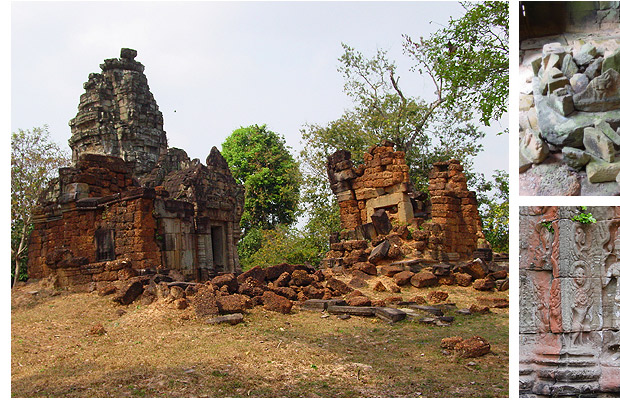
Prasat Prei
Small temple ruins unite in a forest setting near Neak Pean. Remains of a gopura, the central tower and halls, and the vestiges of a library and surrounding wall. Some apsara and lintel sculptures. A ...

Wat Bo Pagoda
Wat Bo Pagoda, near the Siem Reap River on the east side, is one of the oldest in Siem Reap and a peaceful place to escape and take a break to visit the main sites of the nearby Angkor ...

Angkor Thom South Gate
The south gate of Angkor Thom is more popular with visitors as it has been fully restored and many of the heads (mostly copies) remain in place. The gate is on the main road to Angkor Thom from ...

Prasat Aur Pha On
The Orpong temple is one of the other temples in the Kulen mountains, such as Prasith Damrey Krab, Tzu Chi Chinese, etc., built on the throne of Jayavarman II. The temples are mostly built of ...

Kampong Khleang Floating Village
Kampong Khleang is a village in Cambodia, situated on Tonle Sap Lake. Most of the community lives in stilt houses. This creates a unique feeling. Kampong Khleang is a must visit during your trip to ...



.jpg)

